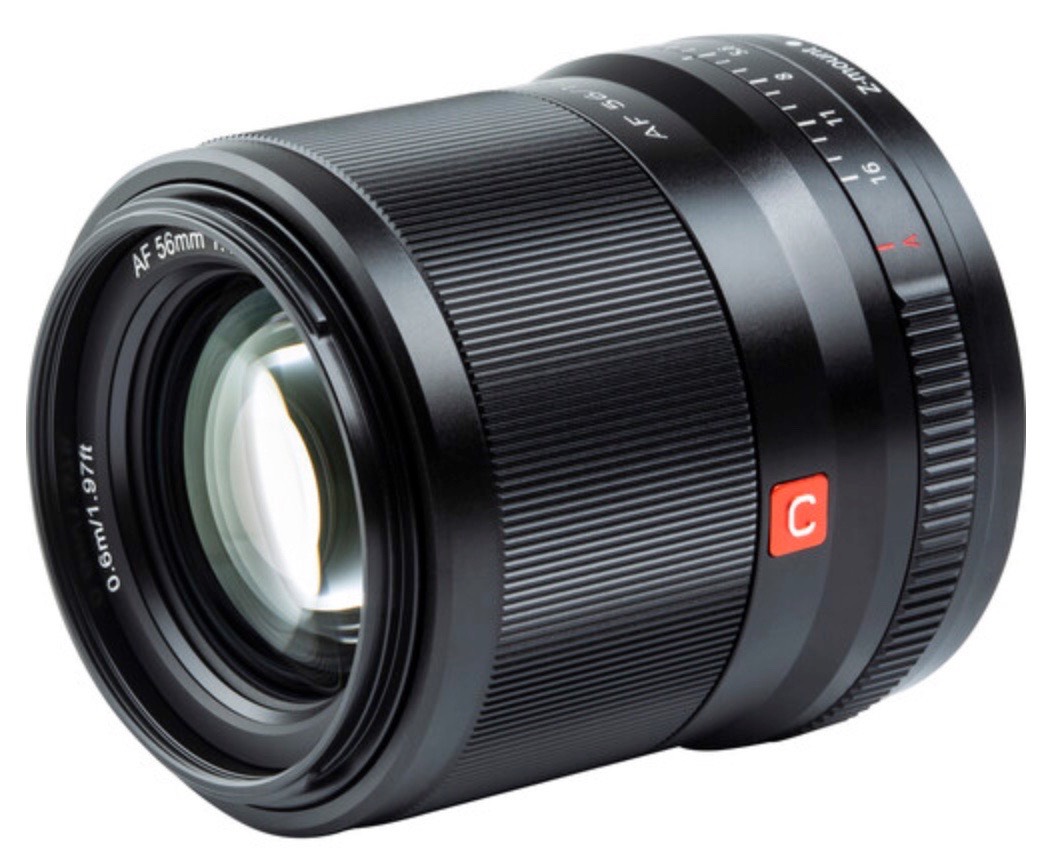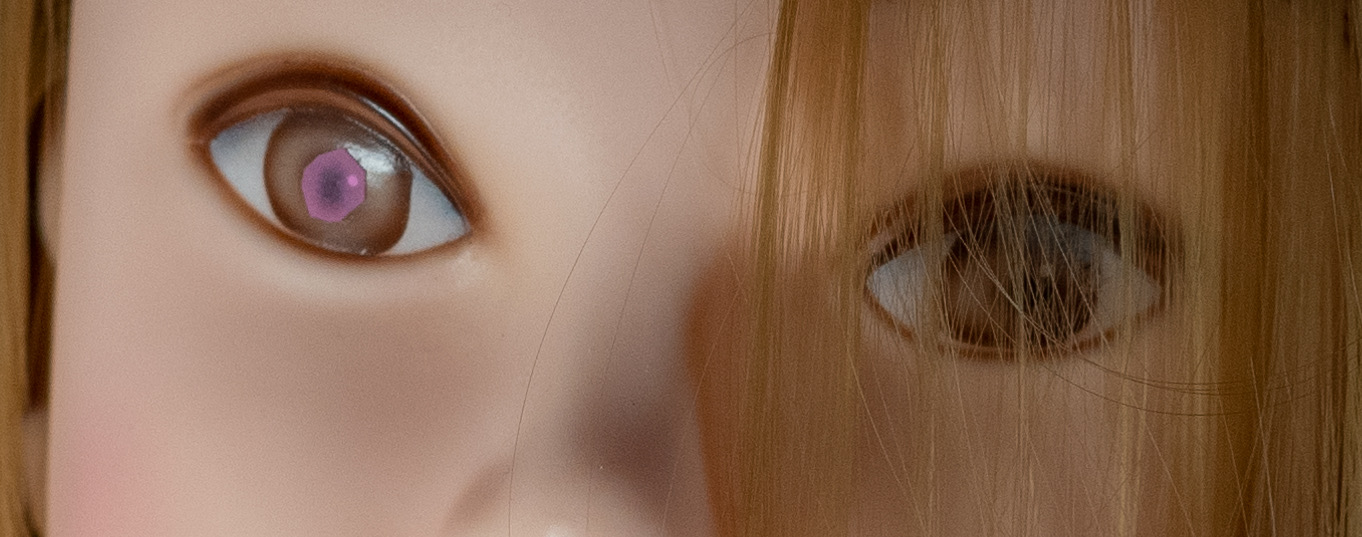
What is It?
The Viltrox 56mm f/1.4 lens is one of the first third-party lenses in the Z-mount to feature autofocus capability. As a crop-sensor lens (DX), the fast aperture coupled with that focal range makes it a near perfect portrait lens (84mm effective). Nikon never produced an F-mount DX prime lens of this type, and about the closest we got from a third party was the Tamron 60mm f/2 macro, so Z50 and Zfc DX users are getting something new we didn't really have in the Nikon crop-sensor DSLR world.
I was a little surprised to see that this lens was 10 elements in 9 groups, and that Viltrox has added both an ED and an HR element. At the price point and the focal length, I would have expected a simpler optical construction. Viltrox also claims nano-coating of some sort, without any specifics.

Apertures range from f/1.4 to f/16 on this lens, and a 9-blade aperture diaphragm is in place inside. You control apertures via an aperture ring, which is clickless. Apertures are marked in 1/3 stop increments on the ring. If you want the camera to choose aperture (e.g. in Shutter-Priority or Program exposure mode), you set the ring to the A position.
Close focus distance is 24" (0.6m), which isn't very close (1:10 maximum magnification), but the focus is all internal, using a stepping motor. No DOF markings are offered.
Up front we have a 52mm front filter thread, and Viltrox supplies a PL-11a lens hood that bayonets on the lens (and can be reversed on the lens for travel).
While the lens is reasonably compact and appropriately DX-sized at 2.8" (72mm) long and 2.6" (65mm) in diameter, it's a robust 10.2 ounces (290g) in weight. That's due to the mostly metal design and all those lens elements inside.
The lens has a built-in USB port for updates (of which there has been some). Price is US$330, and the lens is made in China.
How's it Handle?
This lens balances nicely on a Z50 body, and even reasonably well on the Zfc body. Because our Z DX cameras don't have sensor-VR, and this lens doesn't have VR, I'd be a little careful with this lens on the Zfc body where the lack of a hand grip would be a problem. Indeed, I'd recommend that you get the SmallRig hand grip for the Zfc if you're going to venture into VR-less telephoto.
The aperture ring is de-clicked from f/1.4 to f/16, and it doesn't have a detent at the A position, though you'll feel a "pseudo click" as you get to f/16. It's possible to have the aperture ring between A and f/16 and still be in A mode. There's an abrupt change that happens when you get to the f/16 position—at least if you were at a fast aperture prior to that—so it is usually obvious when you make the transition. Still, I would have liked a lockable A position or at least a strong detent. The aperture ring is smooth in rotation, but makes a clear sound as you adjust it, so video operators beware.
The focus ring is big, easy to find, and works well with the Z50/Zfc. Indeed, manually focusing from far to a near human subject triggers the Face/Eye response in Auto-area AF as you rotate the ring. Even tap-to-focus on the Rear LCD works correctly with this lens.
The supplied metal lens hood snaps into place well. Build quality all around seems high on this lens, particularly for the price.
How's it Perform?
Focus: In my testing, the 56mm f/1.4 produced snappy focusing, even in low light, on my Z50. Moreover, things like Face/Eye recognition are working properly (on both the DX and FX cameras). I did find a few cases where my Z50 would lock onto a bright background and not revert to Face/Eye until I forced the issue, but I doubt this is a lens attribute; the Z bodies, once locked onto a background, are stubborn at letting it go.
Sharpness: Center is very good wide open, and improves to excellent at f/2. Top center performance, also excellent, is attained at f/2.8, but barely better than f/2. From f/4 onwards, the MTF begins falling for the central area, eventually dropping to good at f/8. Corners are a different story. Corners are only fair wide open, and clearly improve at every aperture up to f/5.6, where they hit what I call good. Technically, f/5.6 is the best balanced result, with center at very good and corners nipping at very good. But if you're using this lens for things that are centered (e.g. portraits), I'd stick to f/1.4 to f/2.8.
I thought at first that field curvature might be explaining the center/corner results, but measured field curvature is low. For what it's worth, the full frame Nikon bodies recognized the 56mm f/1.4 as a DX lens and set DX as the image area.

Crop showing actual focus. Eye detect was on the left eye.
Chromatic Aberration: Lateral CA is good, with maybe a pixel's width wide open, and a bit less at smaller apertures. However, Longitudinal CA (LOCA) is clearly present and it can produce clear fringing at high contrast edges at f/1.4. You need to get to f/2.8 to get LOCA under control.
Vignetting: Surprisingly low. Less than a stop at the corners wide open. Moreover, the imaging circle seems wide, so the corner clipping is really mostly just that. I'd say ignore the vignetting on this lens, even though you can't really correct it exactly in camera.
Linear Distortion: Significant pin cushion distortion of nearly 1.5%. The Nikon cameras do not correct for this.
Bokeh: bright edge with a bit of color (LOCA caused), but almost no visible onion skin. Wide open, cats eyes show up in the extreme corners, but the broad central area is relatively immune. Stopped down, the cats eye goes away but the aperture blades start to show slight irregularities in position, so circles don't stay circles.
Final Words
Well, I think we have our DX lens set developing now, but from a third party, not Nikon. This Viltrox 56mm f/1.4 slots right in as the portrait lens of choice for the Z50 and Zfc (it's 84mm effective focal length). I find it pretty much what I'd want for that task, and it has virtually no flaws in that usage. Considering the ~US$300 price, it's a bargain. Indeed, you can build a 23mm, 33mm, and 56mm prime set for about US$1000 using the Viltrox autofocus lenses now available. As far as I can tell from initial testing, they're all similar in capability: strong central performance that needs stopping down for corner performance.
So now we have some interesting prime lens choices on the DX side: Nikon has produced a 28mm f/2.8, 40mm f/2, and 50mm f/2.8 macro lens that all fit nicely in size and weight to the DX bodies. Viltrox has produced 13mm, 23mm, 33mm, and 56mm lenses, all f/1.4, that provide low light usability, and are still appropriately DX sized, though a little on the heavy side due to their all-metal construction. What we're missing now is 20mm and wider (autofocus) lenses for DX. We really still need 16mm and 18mm choices, and then we'd have a near complete set of primes to choose from.
If you haven't figured it out yet, I like this Viltrox lens. So...
Recommended (2021 to present)